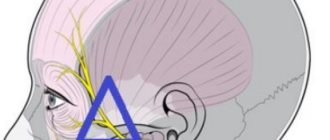A real woman can make three things out of nothing: a salad, a hat and a scandal (c) Coco Chanel
Each of us has a unique character, an individual set of personality traits. But in some cases, excessive emotionality, theatricality and drama may be associated not with character, but with hysteria. And this is not an individual trait or peculiarity at all, but a medical diagnosis.
Hysterical people are extremely emotional, they are always “on stage”. The opinion of others means a lot to them; it practically constitutes the meaning of their life.
For example, a woman does not want a man to go fishing or go to meet friends. She dreams of spending the evening together. Because of this, she may pretend to feel bad or simply throw a tantrum. She will talk about how he doesn’t pay attention to her and abandons her all the time. There will be a lot of tears, just like in a real drama. The purpose of this performance is clear - control and manipulation.
But how to distinguish in which cases a person simply clearly shows his emotions, and where hysteria comes into play? Are there clear signs of this problem? In what cases is it necessary to contact a specialist? We will talk about this and other issues in our article.
What is hysteria
First, let’s find out what kind of diagnosis this is? Let's take a look at the “Dictionary of a Practical Psychologist” by S. Yu. Golovin and see the official definition:
“Hysteria is one of the types of neuroses - a pathocharacterological disorder associated with an excessive tendency to suggestion and self-hypnosis, as well as weakness of conscious control over behavior. It is characterized by various disorders of the psyche, motor sphere, and sensitivity. It manifests itself as a peculiar hysterical character, seizures, disturbances of consciousness and functions of internal organs. Disorders of mental activity are expressed in the forms of a wide variety of psychotic phenomena. With hysteria, demonstrative behavior is clearly observed: with low intensity of experiences, their external expression is very exaggerated (screaming, crying, fainting), which is aimed at attracting the attention of other people.” [1]
In modern medicine, the disease is more often defined as hysterical personality disorder (from the ancient Greek ὑστέρα - “uterus”). This is a disorder characterized by an inexhaustible need for attention, unstable self-esteem, overestimation of the importance of gender, feigned behavior, etc. [2] Let us agree that in this article we will also mean this term by the words “hysteria” and “hysteria”.
As you can see, both definitions say that the patient requires a lot of attention. His self-esteem goes up and down. He may praise himself for minor achievements, and the next day cry and say that he is mediocre. A person dramatizes a lot, exaggerates the uniqueness of the events that happen to him. It is a learned behavior that can be addressed with specific treatment. We'll talk about methods a little later.
Let's teach relationships
BUY ] WATCH VIDEO ABOUT THE SERVICE[/anchor]
According to research, approximately 2-3% of the population is affected by the disease. [3]
Is hysteria a female diagnosis?
For a long time it was believed that this was an exclusively female disease. A hysterical woman is found in many books, psychological works, dissertations, and simply in the conversations of ordinary people. Remember, for example, the mother of the girls from Pride and Prejudice. She gets attention all the time, she manipulates people with her attacks, she becomes dramatic about any event, even if it does not directly affect her.
And although this disease is more common among women, men are also susceptible to this disease. [4] However, it is very difficult for representatives of the stronger sex to realize the fact of their hysteria.
But there is no shame in it, whether you are a man or a woman. This is a disease, not a simulation. And a person needs help in overcoming the problem. Of course, only a doctor can make a diagnosis, but let's analyze some signs of the disease that will help you recognize the disease. We will also look at hysteria in women, symptoms and treatment.
Symptomatic picture
A hysterical girl shows the first signs of hysterical disorder already in childhood, at 5-6 years old.
The child needs all the attention of those around him, which he tries to achieve in a variety of ways. The girl is sensitive to criticism and praise from other children. The child prefers to show his abilities in front of adults and communicate with peers. At school, the only motivation is praise and admiration. Without the support of adults, the child quickly refuses to complete assigned tasks and reacts violently to comments and complaints about his behavior. A little girl's hysteria becomes a norm of behavior that allows her to receive compassion, things of interest, or everyone's attention. Failures in studies and sports cause hysterics. Often a nervous breakdown is accompanied by falling to the floor, convulsions, and aggressive behavior.
Symptoms in teenagers
In a pubescent girl, hysteria takes on the most striking features. Teenagers often cut their wrists in an attempt to get attention. Suicidal attempts by hysterical women are not serious, they are of a “show-off” nature. In severe cases (severe nervous shock, physical overload), when a teenage girl becomes hysterical, irreparable things can happen. The suicidal game crosses the border, because the person is not able to control his behavior. It is important for parents not to miss this moment.
Teenagers have a pronounced protest against the opinions of adults. Often teenage girls run away from home, expressing dissatisfaction with punishment. In some cases, this behavior is expected, so parents usually know where to look for their children. Such protests are typical when children want to prove their “coolness” in a company, to be leaders. But, usually in the society of teenagers this is an imaginary coolness, and most children are still aware of the boundaries of what is permitted. Seeing this, hysterics quickly lose interest and begin to look for a new society.
Hysterical girls often run away from home
Manifestations in adults
Women's hysteria in older age acquires special features. Characteristic signs of hysterical women are observed in their behavior and manner of dressing. Demonstrativeness takes on different features depending on the social circle. With one acquaintance a woman looks modest and vulnerable, but with another she behaves arrogantly, familiarly, defiantly. Hysterical attacks designed for a certain audience and aggressive behavior often occur. To attract attention, a woman can use fantasy stories about her past achievements and embellish reality.
Symptoms in hysterical women may vary depending on their mood. It’s easy for them to find a common language with new people, but they quickly become disillusioned with them when interest in their own person dries up. The behavioral line is determined by emotionality and superficial judgment, a painful perception of the surrounding reality. Such features lead to instability in communication, severance of social ties, and irrational behavior with one’s own child and husband.
A distinctive character trait of a hysterical woman is infantilism. Their mental development is at the level of a child:
- they are immature in judgment;
- do not perceive criticism adequately;
- demonstrate violent protests;
- do not try to correct their behavior, citing incorrect perceptions from others;
- It is common for them to quickly succumb to suggestion from third parties and to self-hypnosis.
Causes of hysteria
This disorder can be caused by external and internal factors. A person’s own emotionality also matters. Other causes include internal conflict, stress, suppression of emotions, dissatisfaction with oneself, somatic diseases, and so on.
The reason may be the need and desire to control the life and actions of another person. Through hysteria, a person tries to manipulate and control.
Hysterical neurosis often haunts people who grew up in dysfunctional families. It can manifest itself in cases where a person is in difficult or unusual circumstances. We must not forget about such individual personality characteristics as the character and mental type of a person.
In fact, for treatment it is not always necessary to know the causes of the disease. Some techniques allow you to successfully cope with symptoms and help change learned behavior. We'll talk about them below.
Description
Hysteria, or hysterical neurosis, is a condition in which any mental disorder is manifested by somatic disorders. It develops against a background of prolonged stress, but the immediate trigger for hysteria is sudden traumatic situations. These may include low grades, a session, dismissal from work, separation from a loved one, threats to life and health. Hysteria is typical for people with a certain character. They are characterized by strong suggestibility, demonstrative behavior, egocentrism, emotional lability, and excitability. Hysteria often occurs in people suffering from mental illnesses on the schizoid spectrum. Hysterical neuroses are more typical for women and children, especially during puberty. Often the disease occurs against the background of attempts to manipulate others through demonstrative behavior, pressure on pity with fictitious health problems. But over time, due to high self-hypnosis and the consolidation of a certain type of reaction in the nervous system, patients actually begin to experience painful symptoms.
Test for hysteria
To determine whether you should consider having a problem, we suggest taking psychological testing. Check the statements with which you agree:
1) You tend to dramatize, exaggerate emotions, and theatrically talk about the events that happened.
2) You are suggestible, that is, you are easily influenced by other people or circumstances.
3) Your emotions are shallow, they often change very quickly. You can cry, and a minute later you can laugh.
4) You strive for actions and situations that will allow you to attract attention to yourself.
5) You are characterized by excessive seductiveness. This applies to appearance and behavior.
6) You are very concerned about your attractiveness.
If at least 4 out of 6 signs are typical for you or your loved ones, then you should pay special attention to this problem and undergo a more detailed diagnosis.
Methods for treating hysteria
Why don’t a person or his loved ones often sound the alarm in case of hysteria? They think that this is a feature of a person's character. Most often this concerns the treatment of female hysteria. Neither the woman herself nor her relatives think that the behavior is dictated by the disease.
Patients may believe that the cause of their strange behavior is chronic fatigue or stress. But don’t ignore the symptoms of the disease! Let us remember that in some cases hysteria can lead to deafness and blindness. The disease requires identification and treatment.
There are several ways that can help get rid of the disease.
Psychotherapy
With this method, the doctor examines the patient and conducts a series of psychological tests with him. It helps to identify the causes of hysterical disorder through lengthy conversations. But not every person is able to analyze their emotions, states, and past. Not everyone can calmly remember childhood and other age periods, as well as the incidents that occurred during these periods.
However, a competent psychoanalyst will identify the reasons why a person may be hysterical in the present tense. He also assesses the psychological status of the patient.
Psychotherapy can help treat the disease. Treatment does not give the desired effect in cases where patients use their condition to obtain benefits, clearly understand this and manipulate others. In this case, this method of treatment may be useless.
This method also includes group and family psychotherapy. They help a person look at himself from the outside.
Diagnostics
Making a diagnosis is often difficult. Relatives usually attribute such behavior to character traits and do not consider it a reason to seek medical help. The patients themselves are sure that they do not experience any mental problems, but they are “brought” to such states.
Due to the variety of manifestations, patients can be observed for a long time by doctors of various specialties: cardiologists, neurologists, gastroenterologists, ophthalmologists. But, often, problems that can cause such symptoms are not identified.
The diagnosis of “hysterical neurosis” is made by a psychiatrist. The main tool of his work is a thorough history taking, both from the patient and from his environment. The conditions under which an attack occurs (the presence of spectators, what precedes the attack, how quickly it passes, whether the administration of medications is necessary), their frequency, the first episode are clarified. The intake of medications, possible toxic effects of industrial hazards and alcohol are clarified. A psychological portrait of the patient is drawn up, indicating typical character traits.
If convulsions often occur during hysterical attacks, an electroencephalogram is prescribed to rule out epilepsy.










